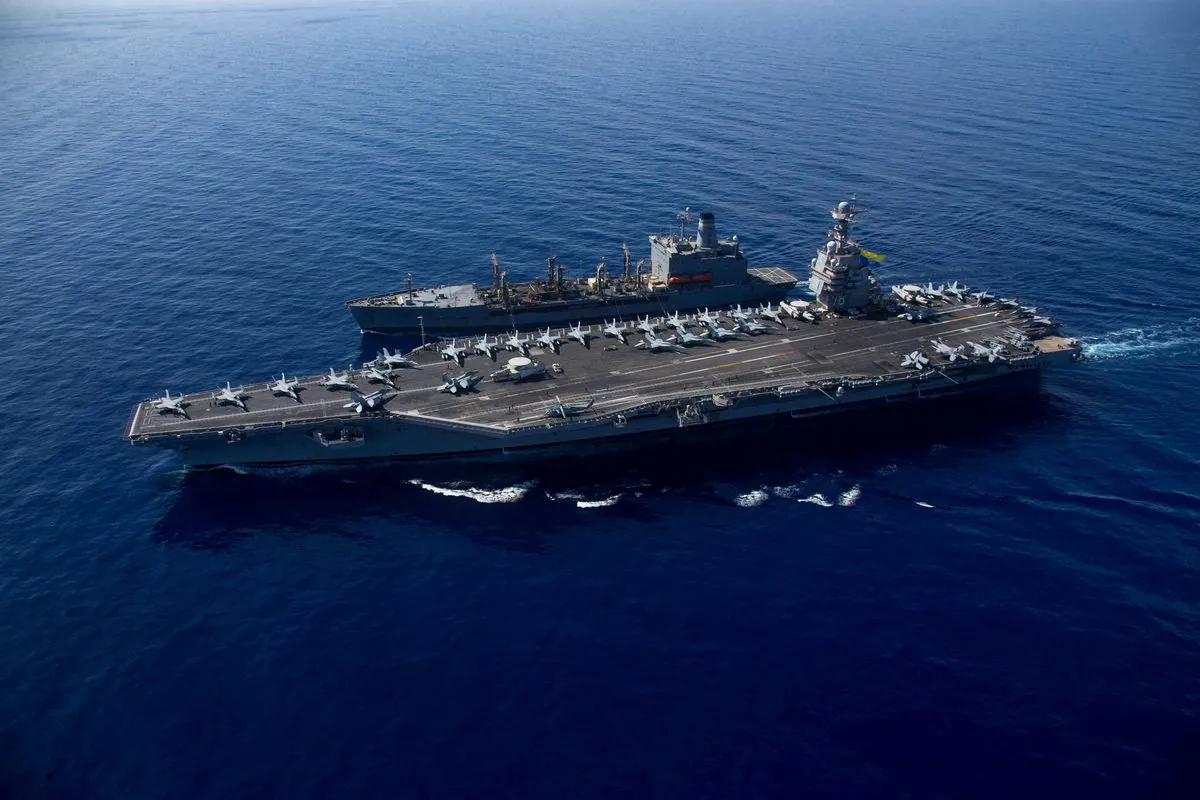The United States is bolstering its naval presence in the Middle East by deploying two aircraft carriers, a move that underscores the ongoing tensions with Iran. This strategic maneuver comes in response to recent events involving Hamas and Hezbollah, highlighting the critical role of these massive warships in projecting American military power.
Lloyd Austin, the U.S. Defense Secretary, announced the accelerated deployment of the USS Abraham Lincoln carrier strike group to the Middle East. This decision leaves the Indo-Pacific region temporarily without a carrier presence. The USS Abraham Lincoln, a Nimitz-class aircraft carrier commissioned in 1989, stretches nearly 1,100 feet in length and is accompanied by a formidable array of support vessels and aircraft.
The USS Theodore Roosevelt, already stationed in the Eastern Mediterranean, will be joined by the Lincoln. This marks the second instance in six months where two U.S. carriers have been simultaneously present in the region. The previous deployment involved the USS Gerald Ford and USS Dwight D. Eisenhower in October 2023.
Jerry Hendrix, a retired U.S. Navy captain and senior fellow at the Sagamore Institute, emphasized the significance of this dual carrier presence: "It allows us to cover both sides of the Middle East. You've got one coming out of the Mediterranean—that gives you double coverage to be able to cover down on Israel on one side and lay pressure on Iran on the other side."
"Iran can launch a bunch of weapons at a carrier, but the ship and its escorts could probably shoot those down."
Aircraft carriers, often referred to as "floating cities," are marvels of naval engineering. With a typical crew of around 5,000 personnel and the ability to carry over 60 aircraft, these vessels serve as mobile air bases capable of projecting power across vast distances. The flight deck of a modern carrier spans approximately 4.5 acres, providing ample space for launching and recovering aircraft.
Despite their impressive capabilities, carriers face challenges in certain theaters. Military experts have raised concerns about their vulnerability to Chinese missiles in the Indo-Pacific region. However, in the Middle East, carriers continue to play a crucial role in deterrence and air defense operations.
Becca Wasser, a senior fellow at the Center for a New American Security, noted the carriers' "renewed importance" in the Pentagon's mission to protect Red Sea shipping from Houthi rebel attacks. The versatility of carrier-based aircraft, such as F/A-18 Super Hornets and EA-18G Growlers, allows for effective interception of drones and missiles threatening regional security.
While the deployment of these massive warships sends a strong message, it's important to note that their presence alone may not deter potential adversaries. The effectiveness of such deployments in preventing retaliatory strikes remains uncertain.
The high operational tempo is taking a toll on the U.S. Navy's carrier fleet. With some vessels entering maintenance cycles and others nearing decommissioning, the number of active carriers is set to decrease from 11 to 9 in the near future. This reduction poses challenges for maintaining a global presence and responding to multiple crises simultaneously.
As tensions persist in the Middle East, the role of aircraft carriers in U.S. naval strategy remains paramount. These floating airfields, capable of traveling at speeds exceeding 30 knots and operating for over 20 years without refueling their nuclear reactors, continue to serve as the backbone of American maritime power projection.
